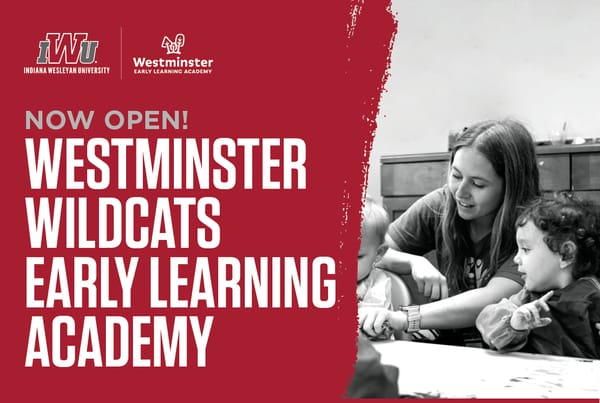Integrating Play Therapy Techniques in Child Counseling

One of the most common misconceptions about childhood play is that it is a frivolous experience, one used to pass the time during those formative years. In reality, however, play is the true work of childhood. Children can explore a wide range of emotions and experiences through play. It is during these moments that they begin to form lasting social bonds with their parents, siblings, and friends.
As a result, play-based therapy is widely used in the field of counseling when working with young children. With numerous types of play therapy techniques available, counselors can provide their young clients with a personalized experience tailored to meet their unique needs.
Understanding Play Therapy in Child Counseling
Young children who have endured trauma or who are navigating a difficult challenge may not have the ability to communicate their thoughts and feelings through words alone. As a result, play therapy has become an essential tool when counseling young children. Understanding the play therapy benefits and the best techniques to use can help counselors successfully integrate it into their own practice.
What Is Play Therapy?
Insights Psychology defines play therapy as an evidence-based therapeutic approach used to help young children, typically between the ages of 3 and 11, process their emotions and experiences. Counselors can create a secure and nurturing environment for children to express themselves by utilizing play, the natural language of childhood.
Goals and Benefits of Play Therapy
This structured approach to counseling young children is used to help children express their feelings and process their emotions when they are unable to do so using verbal communication. The leading play therapy benefits include:
- Empowering children to process trauma or challenging situations in a way that feels comfortable and natural.
- Helping children develop problem-solving skills.
- Giving children the ability to learn to express their emotions and self-regulate.
- Supporting the development of social and emotional skills, which can enable children to strengthen bonds with family members and peers.
- Cultivating empathy in children.
Core Techniques in Play Therapy
Depending on their specialty area and scope of practice, counselors will find that they can use a variety of play therapy techniques with their young clients. The techniques used may vary based on the individual circumstances that the child is facing, their age, their development, and their personal interests.
Directive vs. Non-Directive Approaches
Counselors often choose to take either a directive or non-directive approach to play therapy, based on the needs of the child they are working with. Directive play therapy requires counselors to act as guides throughout the session and to select therapeutic play activities that will be used during treatment. Conversely, Cognitive Behavioral Play Therapy notes that non-directive play therapy puts the child in the driver's seat, with the therapist giving the young client the freedom and flexibility they want to choose the activities that appeal to them most. Both approaches enable the therapist and patient to form a stronger bond as they collaborate to identify and process the child's emotions.
Common Play Therapy Methods
Some of the common play therapy methods that are used include:
- Sand Tray Therapy — Sand tray therapy, also known as sandplay therapy, is a therapeutic approach often employed by counselors working with children who have experienced trauma. This non-verbal approach to counseling requires clients to create scenes using miniature toys and sand. Once the scene is created, the counselor can engage the child in conversation about the scene and begin to extract meaning from it.
- Storytelling Therapy — Storytelling therapy is a form of play therapy that invites the child to share a fictional story and discuss the conflict of the story and the overall moral of the story with their therapist.
- Gestalt Play Therapy — Combining the fundamental principles of Gestalt Therapy with play therapy, this structured approach encourages children to become more present and identify their current emotions more readily. This is an experiential and holistic approach to play therapy.
- Art Therapy — Art therapy for children is used by counselors to help their clients express themselves through creativity. Art therapy uses a variety of artistic mediums, including clay, paint, pencils, and more.
Interpreting Play Themes
Research published in the Clinical Child Psychology and Psychiatry academic journal suggests counselors and therapists can use the play theme assessment during the evaluation process. Developmental play therapy counselors can rapidly understand their young clients' needs and abilities by interpreting play themes.
Integrating Play Therapy Into Counseling Practice
Play therapy should be strategically integrated into counseling practice to ensure that young clients receive the personalized care they require. Counselors can incorporate play therapy into their practice by:
Assessment and Treatment Planning
Before play therapy can be used effectively, counselors must assess and evaluate their clients to determine which type of play-based treatment will be most beneficial to them. In this initial stage, counselors often observe their clients while playing and take note of their play-based experiences.
Creating a Safe and Engaging Environment
Once the counselor has decided which type of play therapy techniques to use, they must create a safe and nurturing environment in which the child feels comfortable enough to engage in play. A sense of trust between counselor and client is essential to effective play-based therapy.
Working With Families
Developmental play therapy is a collaborative approach to counseling, requiring therapists to work closely with family members and caregivers to provide them with insight and guidance as the child progresses through therapy. Counselors can forge a strong alliance with families by providing insights into child-centered play therapy and guiding them on how to apply similar methods at home.
Applications in Different Settings
Due to its versatile nature and its overall effectiveness, trauma-informed play therapy can be applied in a variety of professional settings where counselors work directly with children between the ages of 3 and 11 years old, such as:
School Counseling and Educational Environments
Play-based learning is common in educational environments, making play-based therapy a powerful tool for school counselors. School counselors create a secure environment for young children to process emotions and share experiences, fostering their personal and academic success.
Clinical Environments
Clinical counselors may find that play-based therapy is appropriate, depending on the age and emotional development of the clients they are working with. Play-based therapy can help children express feelings and experiences when they are unable to find the right words to use.
Training and Ethical Considerations
Given the fact that play-based therapy is an adaptable, evidence-based approach to counseling young children, it's not surprising that it has become more common in recent years. However, before counselors can begin integrating play-based training into their practice, they should complete advanced training to ensure they can use play-based therapy correctly in counseling environments.
Professional Development for Counselors
Play-based therapy is a method used as part of the treatment plans for children who are suffering from many different types of mental health conditions and concerns, such as anxiety, depression, grief, trauma, and abuse. In addition, it is an effective treatment option for children who have developmental disorders or behavior issues. To provide children with personalized care and evidence-based treatment plans, counselors should prioritize ongoing professional development throughout their careers.
For example, counselors should consider earning a graduate degree in counseling. Additionally, they may want to pursue further certifications, such as a play therapy certification. There may also be conferences, online training programs, and specialized courses that allow counselors to explore new and advanced play therapy techniques.
Ethical and Cultural Sensitivity
Ethical and cultural sensitivity are paramount to the success of play therapy. Counselors who work with children need to be able to provide personalized care to children from all backgrounds, requiring them to be both culturally aware and sensitive. Creating an inclusive therapeutic environment is critical. Counselors can provide children with culturally responsive play-based therapy treatment by:
- Offering children culturally-appropriate toys based on their background. Play therapists should invest in a diverse range of toys to ensure that all their clients feel represented and valued in the therapeutic setting.
- Evaluating and examining the types of toys available by exploring the size, shape, texture, color, and characteristics of the toys. Inclusive options should be available for dolls, food items, medical kits, animals, and more.
Explore the Role of Child-Centered Play Therapy in Counseling at Indiana Wesleyan University
Playing is a critical part of childhood emotional development, which is one of the reasons why play-based therapy is so powerful. The Indiana Wesleyan University Division of Counseling offers both undergraduate and graduate counseling programs that explore the role of child-centered play therapy and its impact on clinical outcomes in young children. Graduates of our counseling programs leave IWU with the ability to work with a diverse patient population and a willingness to incorporate their faith into their practice.
Find your program today and request more information about our Christ-centered campus.




